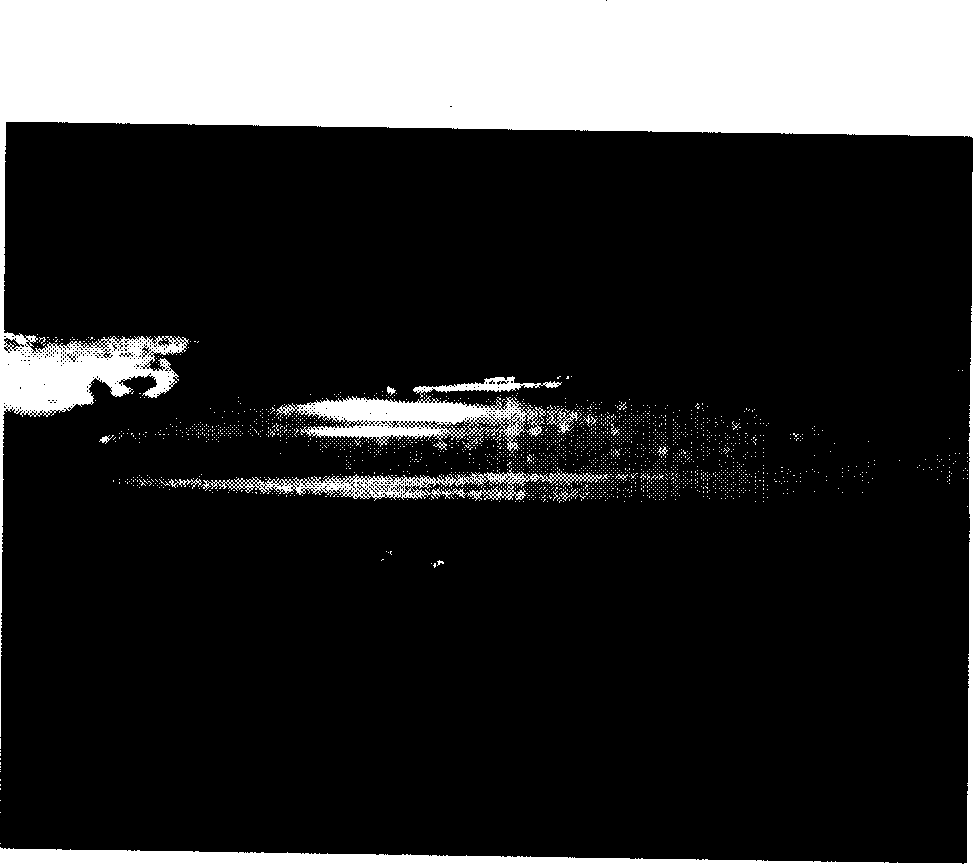Peptides natural microbial antiseptic agent producing strain, its use and preparation method for antiseptic agent
A technology of microbial preservatives and preservatives, applied in the direction of biochemical equipment and methods, botany equipment and methods, applications, etc., can solve the problems that the bacteria produced are under research, achieve the function of regulating the gastrointestinal tract, and have a wide range of antibacterial , the effect of treating allergic rhinitis
- Summary
- Abstract
- Description
- Claims
- Application Information
AI Technical Summary
Problems solved by technology
Method used
Image
Examples
specific Embodiment approach 1
[0027] Specific embodiment one: present embodiment isolates and identifies Lactobacillus paracasei HD1.7 like this:
[0028] ①The strains were isolated from L-lactic acid bacteria pickled sauerkraut fermentation broth by conventional plate streak separation method.
[0029] ②Screening of strains capable of producing antibacterial substances: After each single colony was expanded and cultivated on a plate, it was inserted into the fermentation broth for 48 hours at 37°C, and the fermentation broth was centrifuged at 3500r / min for 12 minutes. Staphylococcus aureus, Escherichia coli, Salmonella and other 12 kinds of indicator bacteria were cultured on a double-layer detection plate for 12 to 24 hours, and the antibacterial effect was observed, and the strains with broad antibacterial spectrum and strong antibacterial ability were retained.
[0030] ③ A strain that can metabolize and produce peptide preservatives was obtained, which was identified as Lactobacillus paracasei (Lacto...
specific Embodiment approach
[0031] The specific implementation method is as follows: (1) using conventional culture characteristics, physiological and biochemical characteristics to identify peptide preservative producing bacteria as Lactobacillus; Design PCR primers based on the conserved sequences at both ends of the 16SrDNA gene of many species of Lactobacillus, extract DNA by lysozyme-SDS-potassium acetate method, amplify by PCR, electrophoresis, recover PCR products, and clone PCR products into plasmid vectors, After being amplified in the bacteria, the carrier with the 16SrDNA gene was used as a template, and M13F or M13R was used as a primer for sequencing, and the 16SrDNA sequence analysis was carried out to identify the peptide preservative producing bacteria as Lactobacillus paracasei HD1.7 (Lactobacillus paracasei HD1.7 ).
specific Embodiment approach 2
[0032] Specific embodiment two: the preparation method of the peptide natural microbial preservative of the present embodiment includes the following steps: a, fermentation of the peptide preservative: the preservation slant of Lactobacillus paracasei HD1.7 is streaked and inoculated on the fermentation medium, 35-40°C upside-down culture for 36-48 hours, then inoculated into the seed fermentation liquid, and then cultured statically at 35-40°C for 24-36 hours, then inoculated with 1-3% of the inoculation amount into the expanded culture fermentation liquid, at 35-40 Cultivate statically for 24-36 hours at ℃, then inoculate in the secondary expansion culture fermentation broth with 1-3% inoculum amount, culture statically at 35-40°C for 24-36 hours, continue to inoculate with 1-3% inoculum amount In the fermentation broth, culture statically at 35-40°C for 30-50 hours; b. Separation and purification of peptide preservatives: centrifuge the fermentation broth of Lactobacillus pa...
PUM
 Login to View More
Login to View More Abstract
Description
Claims
Application Information
 Login to View More
Login to View More - R&D
- Intellectual Property
- Life Sciences
- Materials
- Tech Scout
- Unparalleled Data Quality
- Higher Quality Content
- 60% Fewer Hallucinations
Browse by: Latest US Patents, China's latest patents, Technical Efficacy Thesaurus, Application Domain, Technology Topic, Popular Technical Reports.
© 2025 PatSnap. All rights reserved.Legal|Privacy policy|Modern Slavery Act Transparency Statement|Sitemap|About US| Contact US: help@patsnap.com

